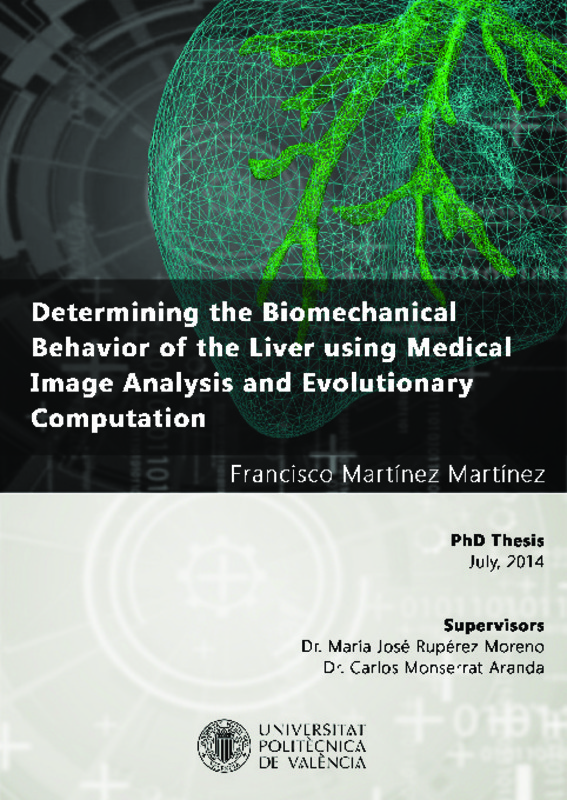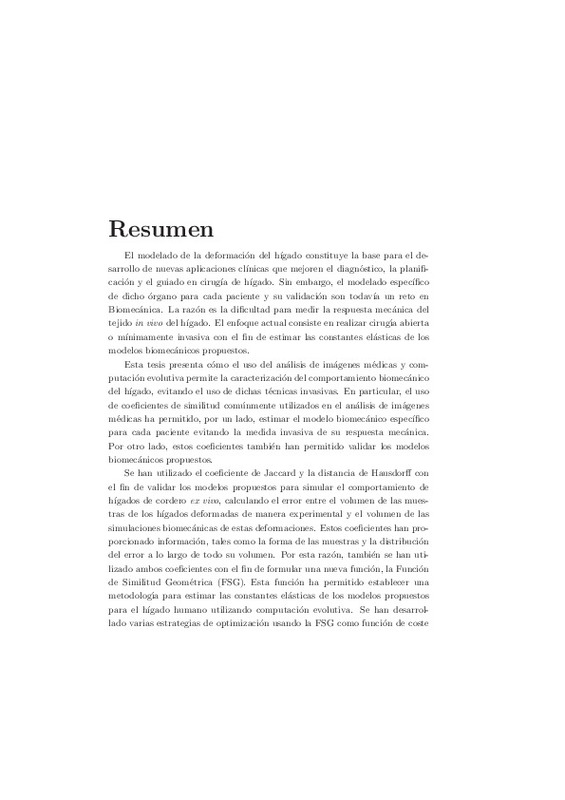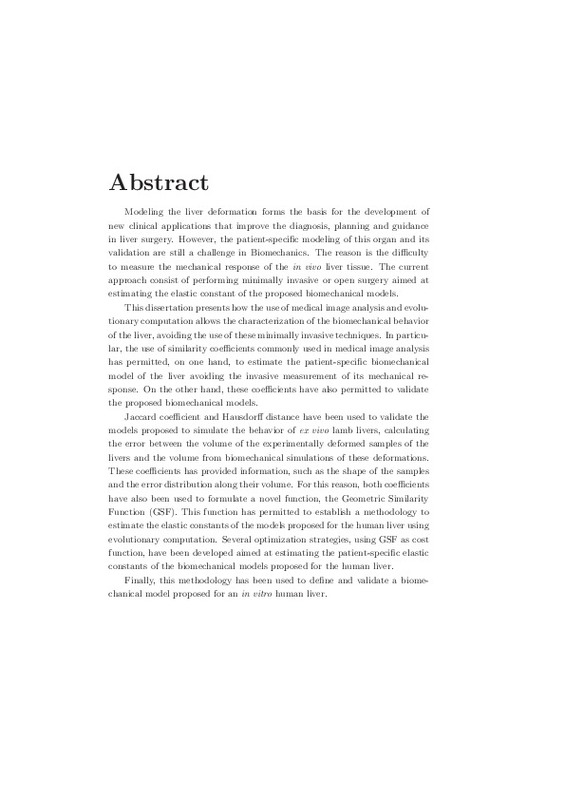- RiuNet repositorio UPV
- :
- Investigación
- :
- Tesis doctorales
- :
- Ver ítem
JavaScript is disabled for your browser. Some features of this site may not work without it.
Buscar en RiuNet
Listar
Mi cuenta
Estadísticas
Ayuda RiuNet
Admin. UPV
Determining the Biomechanical Behavior of the Liver Using Medical Image Analysis and Evolutionary Computation
Mostrar el registro completo del ítem
Martínez Martínez, F. (2014). Determining the Biomechanical Behavior of the Liver Using Medical Image Analysis and Evolutionary Computation [Tesis doctoral]. Universitat Politècnica de València. https://doi.org/10.4995/Thesis/10251/39337
Por favor, use este identificador para citar o enlazar este ítem: http://hdl.handle.net/10251/39337
Ficheros en el ítem
Metadatos del ítem
| Título: | Determining the Biomechanical Behavior of the Liver Using Medical Image Analysis and Evolutionary Computation | |||
| Autor: | Martínez Martínez, Francisco | |||
| Director(es): | ||||
| Entidad UPV: |
|
|||
| Fecha acto/lectura: |
|
|||
| Resumen: |
Modeling the liver deformation forms the basis for the development of
new clinical applications that improve the diagnosis, planning and guidance
in liver surgery. However, the patient-specific modeling of this organ and ...[+]
|
|||
| Palabras clave: |
|
|||
| Derechos de uso: | Reserva de todos los derechos | |||
| DOI: |
|
|||
| Editorial: |
|
|||
| Tipo: |
|
recommendations
Este ítem aparece en la(s) siguiente(s) colección(ones)
-
Tesis doctorales [5389]













